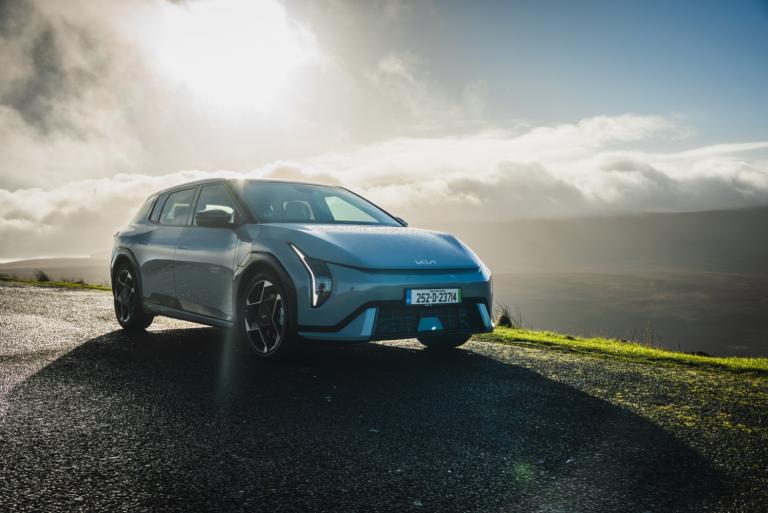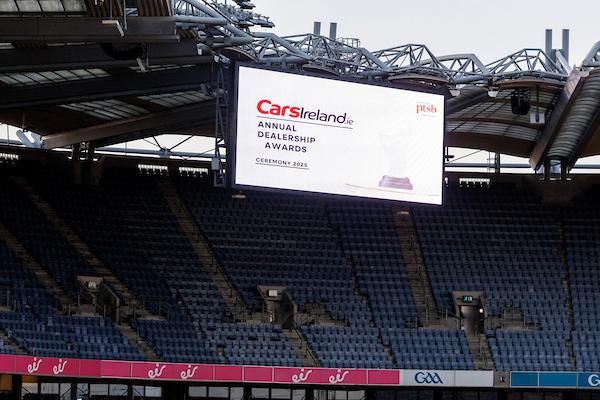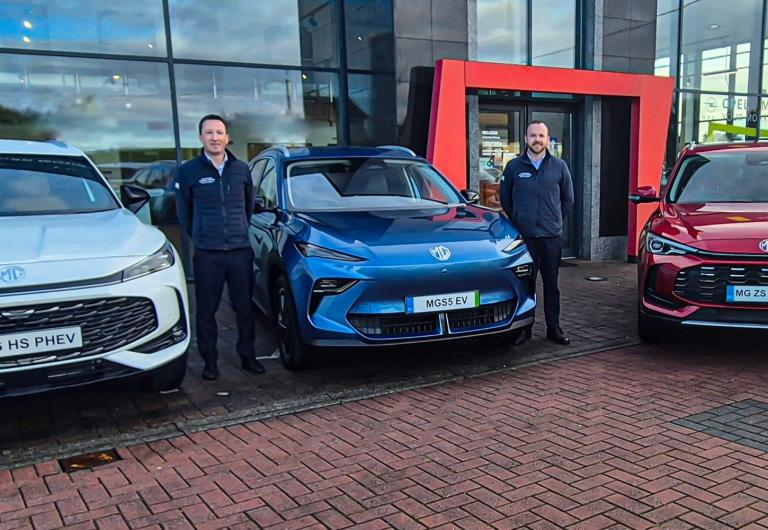Back on the road with Corolla saloon – and a question about plug-in hybrids
Published on 30 March, 2019
Big plus: the new Toyota Corolla hybrid saloon is roomier than the hatch
Overview
I wouldn't blame you for wondering what I am doing reviewing the saloon version of a car whose hatchback sibling adorned this page only last Saturday. It's just that halfway through my test drives, I had this troublesome thought. And I'd like to share it with you. Now, you might be a little shocked and think me partisan when I tell you what it is, but let me try to put all in context.
Last week, you might recall, I went into detail on how the Toyota Corolla hatchback fared on fuel consumption over long journeys. One leg, from Letterkenny to Dublin, yielded 4.6litres/100km (61.4mpg).
The saloon has never had a hybrid powering it before (the hatch's predecessor was the Auris hybrid, you might recall).
So I was anxious to see how it fared on a number of other fronts too.
Some claim it is the least stylish of the Corolla trio (with the hatch, there is also an estate - a genre we don't bother with much).
The saloon is what I consider to be Middle Ireland's car. It is big, roomy and well proportioned, if not as smart-looking as the hatch. It isn't intended to be: people are entitled to choose more conservative automotive profiles.
One aside however: despite palpable additional visual space in the cabin, the low-ledge sweep of the stylish dash on the front passenger's side restricts knee/shin room and forces taller occupants to sit further back than might be expected. The result is the rear-seat passenger is a bit more restricted than he/she might expect too. It's not a big complaint, by any means, but worth noting. That said, we had good room for two hefty passengers during a spin to, from and around the home county. The boot had plenty of room for our stuff, too; it has far more usable space than the hatch.
And only under extreme provocation was there even a hint of 'catch-up' boom from the Continuously Variable Transmission (CVT). That used to be a big downer - brought about by the transmission frantically trying to keep pace with engine-speed demand. It definitely is not an issue any more.
Another aside: I like the interior a lot, but would alert you to making sure you get the fabric and dash colours to your taste: the dreary, creamy elements of test-car cabin/seat décor were most certainly not to mine. I think you'd want something warmer looking and dirt-disguising if regularly taking a young family on board. It reminded me of dull incarnations from a decade or so ago.
I won't go back over points previously made about the hatchback because so many core areas are shared.
Suffice to say, I initially got 5.1l/100kms, which I found disappointing until I checked my notes and realised I'd fairly hammered it for 250km one evening alone. I subsequently reset the computer for my more sedate, semi-urban journeys and got a much better 4.5l/100kms.
And that leads me to the real point of this review (embryonic rant?): if we are so hell-bent on getting rid of diesel, why do we discriminate so heavily on taxation/incentives against 'ordinary' hybrids? We (taxpayers) contribute just up to €1,500 in VRT rebates to buyers. Electric cars get €10,000 (rebate/SEAI grant). Absolutely right they should: we're headed for pure electric. But plug-in hybrids (PHEVs) get up to €7,500 off (€2,500 VRT relief + €5,000 SEAI grant). Yes PHEVs. The ones you can travel 25km or so on battery power alone - if you bother to charge them each day. But who regularly bothers? I don't believe 90pc of owners plug them in at home or work. Which means you and I are subsidising the purchase price for those who won't use them for their stated purpose. I'll be accused of lobbying for makers of ordinary hybrids, but you have to ask why they are discriminated against so heavily when you look at PHEVs?
I still love diesel. I believe it is hugely relevant for many. But if we want to shift away from it, then hybrids make sense in many cases. It beggars belief why we give PHEV buyers such a subsidy and have no way of checking if they bother to ever use the charging element. I know PHEVs also function as ordinary hybrids. But, don't forget, their engines are also usually fairly big petrols which will return much lower MPG if the battery pack is not regularly used. It's madness: a licence to buy something at our expense if not properly employed.
At least with an ordinary hybrid, such as the Toyota Corolla saloon on test, what you see is what you get. That goes for the principle of the hybrid and, as it happens, for the car itself.
Facts & figures
Toyota Corolla hybrid saloon:
1.8-litre hybrid (122hp). From 3.4l/100km, €170 tax. Hybrid saloon range starts €26,820. 'Sol' spec tested, €31,705, and included: Safety Sense 2; 8ins multimedia system, 7ins TFT info screen, satnav, 18ins alloys, parking sensors, 471-litre boot, LED DRLs, rain/light sensors, temp spare, rear-view camera, heated seats, partial leather seat trim, dual-zone air con.
Latest Reviews

Kia EV4 Video Review

CarsIreland Dealership Awards 2025: Celebrating Excellence Across Ireland

Rochford Motors Joins MG Network as New West of Ireland Dealer